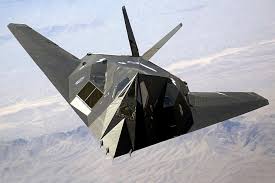What is the Lockheed Martin F-117 Nighthawk?
The F-117 Nighthawk was developed in the 1970s and entered service in 1983. Its distinctive diamond shape was highly effective at reducing radar visibility, making it one of the first operational stealth aircraft. Initially a secret project of the U.S. Air Force, the F-117 was only revealed to the public in 1988, five years after entering active duty.
The aircraft was built quickly by leveraging existing components from other planes and using conventional aerospace aluminum, simplifying construction. Its first operational deployment was over Panama in 1989, followed by notable missions over Iraq during the Gulf War in 1991 and Operation Iraqi Freedom in 2003.
Why the United States Needed the F-117
The F-117 Nighthawk was developed to address the growing threat of advanced air defense systems during the Cold War. In the 1970s and 1980s, the Soviet Union deployed sophisticated radar systems and surface-to-air missiles (SAMs), posing a challenge to conventional aircraft.
To counter this, the F-117 incorporated cutting-edge stealth materials, precision strike capabilities, and low observability technology. It could operate in heavily-defended airspace while remaining undetected by existing radar systems.
Main Advantages of the F-117 Nighthawk
The F-117 Nighthawk introduced several technological innovations that made it a formidable stealth aircraft. Key features included:
- Stealth Technology and Low Observability – The plane could avoid enemy radar detection, allowing it to operate undetected in combat zones.
- Precision Strike Capability – Equipped with GPS-aided navigation and laser-guided bombs, the F-117 could deliver precise strikes. Accuracy ranged from 41-60% of strikes, still impressive compared to older aircraft.
- Night Operations – Designed primarily for night missions, it used advanced imaging systems to observe terrain and targets.
- Modern Avionics – The F-117 featured quadruple-redundant fly-by-wire controls, automated mission planning, and target designation systems for laser-guided bombs.
These features made the F-117 a unique and highly effective aircraft throughout its operational life.
When Was the F-117 Nighthawk Retired?
The F-117 Nighthawk was retired in 2008. The Air Force cited advancements in newer aircraft, such as the F-22 Raptor and F-35 Lightning II, which surpassed the F-117 in capabilities.
During its service, only one F-117 was lost, in 1999 over Yugoslavia during Operation Allied Force. Despite its stealth, the aircraft was not invincible—support aircraft and attack helicopters often neutralized low-frequency radars to ensure mission success.
Why Was the F-117 Retired So Quickly?
For a stealth aircraft, a 25-year service life was relatively short. The main reasons include:
- Radar Advancements: New radar technologies can detect stealth aircraft like the F-117, making it less effective.
- Limited Situational Awareness: Unlike newer fighters (F-22, F-35), the F-117 cannot map threats in real-time or survive prolonged detection.
- Technological Evolution: Modern missions require more adaptable and versatile aircraft, leading to the development of next-generation stealth fighters.
While the F-117 revolutionized stealth aviation, newer aircraft now ensure the U.S. Air Force maintains air superiority in modern combat.
Conclusion
The F-117 Nighthawk remains an iconic symbol of stealth technology and Cold War-era innovation. Its rapid retirement was driven by advancements in radar systems and the need for more capable modern aircraft. Understanding why the F-117 was retired so quickly offers insight into how military aviation evolves to stay ahead of emerging threats.





